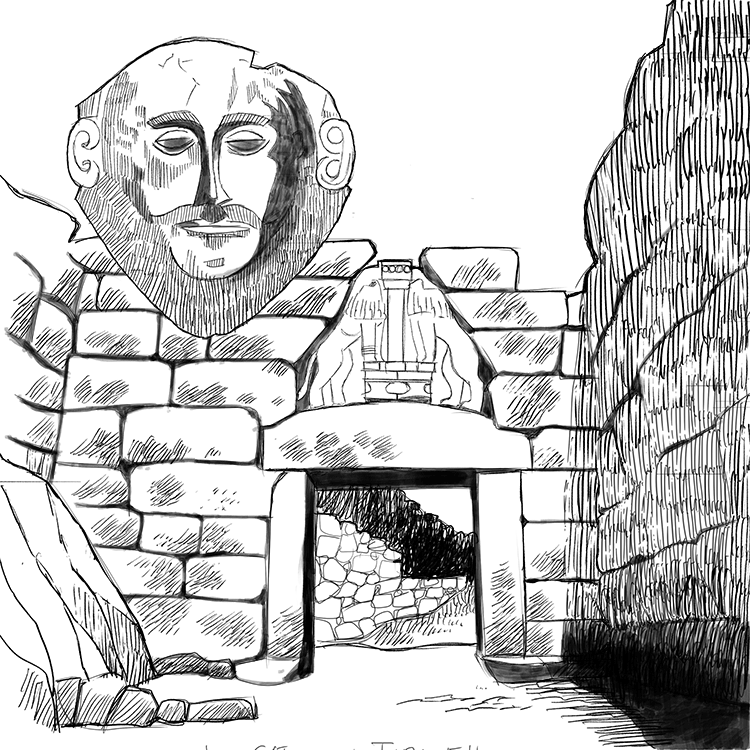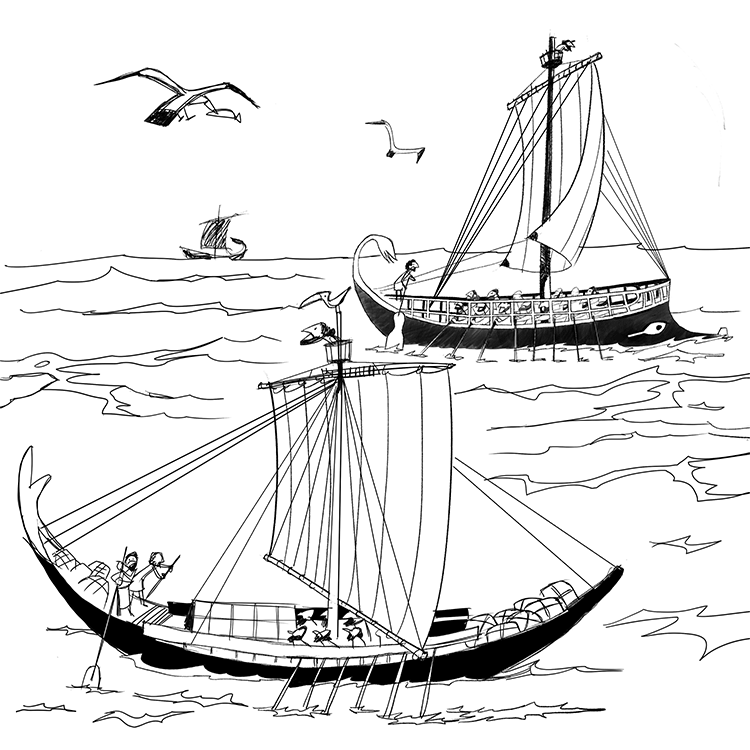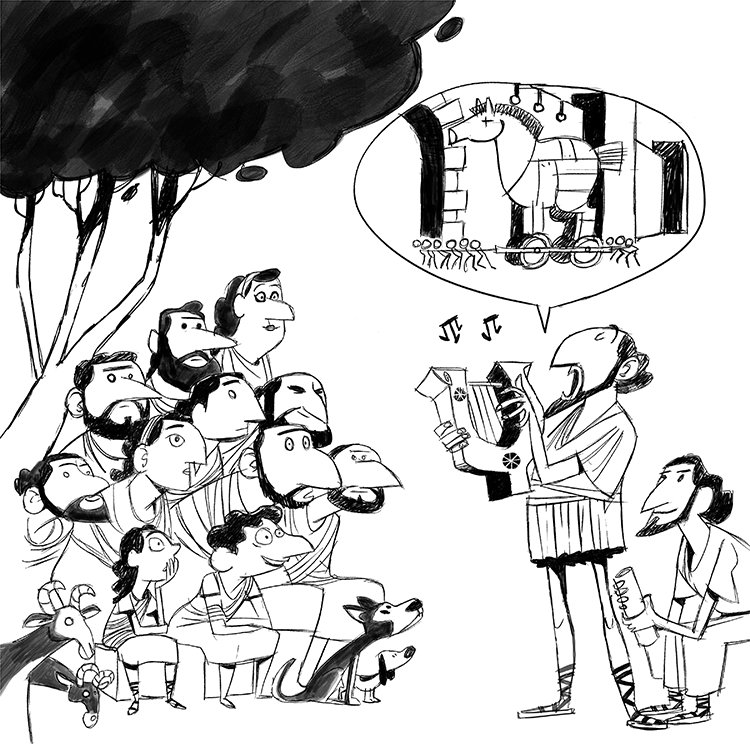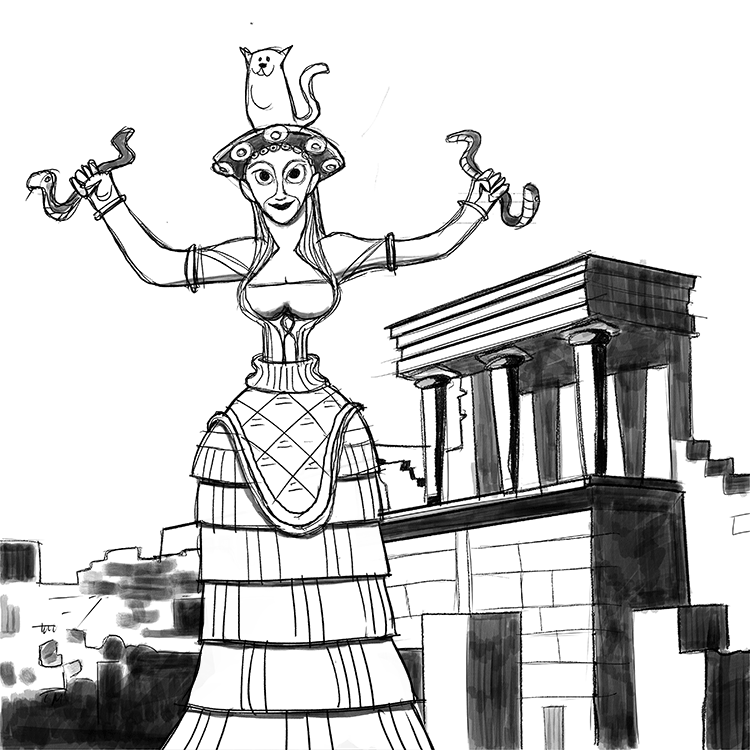To be able to know where we’re going, we must first know where we’ve been.
Such a statement has been uttered by various people throughout history. And for good reason.
It’s true!
When most of us think of Ancient Greece, we think of Athens, Sparta, Corinth, the Oracle of Delphi, war with the Persians, and so many other things. But this refers to the Classical Age of Greece, a period from around 800 BC to roughly 338 BC.
During this time, the Greeks gave the world so much: Aristotle, Socrates, and Plato; democracy.; art and architectural styles that remain to this day; mathematical concepts such as the Pythagorean Theorem; and much, much more.
But these were not the first Greeks. This civilization was built upon another, that of the Mycenaens.
Though little is known about the Mycenaens, their role in setting the stage for the Classical Age cannot be overlooked.

The First Greek Civilization
While Athens, Sparta, and company get all the credit, the Mycenaeans were actually the first “Greeks.”
It’s believed they started settling mainland Greece perhaps as early as 3000 BC, though they didn’t start building what we would call a civilization (cities, farms, specialization, etc.) until about 1600 BC.
In addition to settling mainland Greece, they also spread out along the coasts of the Aegean Sea, populating the many Greek islands as well as the coastlines of what is now Turkey and Italy.
In doing this, the Mycenaeans came into close contact with the Minoan culture, a people living on the modern-day island of Crete that built Europe’s first civilization. From the Minoans, the Mycenaeans learned how to farm, how to build, and how to rule.
Many Mycenaean cities were the seeds that later grew into the great Greek cities we all know, though few of them had the same names. Their capital, Mycenae, was located on the Peloponnese, the peninsula that Sparta would one day dominate.
But the Mycenaeans also left behind many other things that would help set the stage for Greece’s rise to prominence during the Classical Era.
Linear B Greek
Language is the backbone of pretty much every culture. We identify groups of people often by the languages they speak, and without a common language, it’s practically impossible for people to come together and form what we would call a civilization.
The Mycenaeans developed the first version of a common Greek language, known as Linear B Greek. Despite its boring and somewhat unoriginal name, this was significant because it, for the first time in history, created a singular Greek culture.
This made it possible for the Mycenaeans to connect their various cities and build a civilization that would serve as the foundation for the Classical Greeks.
When the Classical Age did begin, the Greeks adopted a different language, one that used an alphabet borrowed from the Phoenicians. But it was the linguistic legacy of the Mycenaeans that made this possible.
Unfortunately, while the Mycenaeans were good at speaking their Linear B language, they weren’t much for writers. So, while we know the language exists, we can’t really use it to learn about the Mycenaeans, which is why so much of their history remains a mystery.

Trade With the Ancient World
Due to the geography of Greece (islands and mountains in the middle of Europe and Asia), the Mycenaeans were prolific traders.
In addition to coming into contact with the Minoans, the Mycenaenas also worked with the Egyptians, the Babylonians, the Hittities, and many other ancient cultures to trade staple and luxury goods.
This put the Greeks on the maps of all the great ancient civilizations, bringing these cultures together pretty much forever.
By the time the Classical Age began, the Greeks had long histories with their many neighbors, and these relations helped define the history that has made the ancient Greeks famous until this day.

Homer
Homer didn’t write his poems on paper, The Iliad and Odyssey were recited at festivals and accompanied by music to entertain people.
The Trojan War
Few ancient conflicts are as famous as the Trojan War.
As told in Homer’s famous epic poem, Iliad, the gods created Helen, “the most beautiful woman of all time.” Not a bad title, unless it leads to a horrible war.
She was then married to Menaleaus, the king of Sparta, but made to fall in love with Paris, the prince of Troy, a Greek city located in what is now modern-day Turkey.
Interestingly, Sparta as we know it didn’t exist at the time, yet the story says it does, proof that while Homer tried to pass this off as history, he was really just making stuff up.
Furious that Paris stole his wife, Menalaeus, along with his brother Agammemnon, the king of Mycenae, set out on an expedition to destroy Troy.
After the death of Agammemnon, as well as the legendary fighter Achilles, the Mycenaens appeared to have lost. But then they built the infamous Trojan horse, which allowed them to break into the city and slaughter its people.
Famous for its simplicity, the Trojan horse was a giant wooden horse that was hollow and on wheels. The Greeks presented it to the Trojans as a sign of their surrender. Eager to end the conflict, the Trojans allowed the horse inside their city walls, but much to their surprise, once inside, a bunch of Greek soldiers jumped out of it and ransacked the city.
This little trick basically ended the war, and humiliated the Trojans who did survive. Today, the term “Trojan horse” is used to describe something that tricks a person into letting them into a place where they don’t really belong. Not the best way to be remembered…
After the success of the Trojan horse, Menalaeus got his wife back, and order was restored to the world.
Another hero from the war, Odysseus, then traveled back to Greece, and his journey was documented in another epic poem, The Odyssey.
Sounds like a nice story, no? Too bad it’s all made up! Or, at the very least, there is no historical evidence to suggest any of this happened.
One leading theory is that this story was based upon a real conflict between the Mycenaens and the Hittites, who had a city near where Troy was said to be. Though this has never been fully proven. But even though it is likely just a juicy piece of fiction, this story has still had a powerful impact on Greek history.

Building a Common Culture
Homer wrote these poems sometime in the 8th century BC, right around the time Greece was once again building itself up. Its great cities, Athens and Sparta, were growing, and Greece was starting to make a name for itself on the ancient stage.
It’s therefore most likely that these stories served to help build a common Greek culture, a collective history the Classical Greeks could use to construct an identity, understand their past, and begin forging their future,
Heroes such as Agamemnon, Menelaus, Achilles, and Odysseus are all regular features of Ancient Greek art and literature, and many of the gods the Greeks worshipped during the classical age have their roots in Mycenaean culture.
And this is perhaps the biggest legacy of the Mycenaeans. Sure, their palaces, cities, and trade networks were important, but their existence served as the foundation for Classical Greece.
They were the seed that soon grew into one of the most prosperous and influential civilizations of the ancient world.
Collapse of Mycenaean Greece
The Mycenaean Civilization reached its peak between 1600-1100 BC, give or take a few hundred years. And then it pretty much disappeared off the face of the Earth.
But this wasn’t something that just happened to the Mycenaeans. Pretty much every civilization in the region experienced a decline starting around 1100 BC.
And no one really knows why.
There are some theories. But they’re just that – theories.
For example, there are stories of a foreign culture known as the Sea Peoples invading Greece and other civilizations in the area, and this may have led to the downfall of civilization. But given how widespread this collapse was, there was likely something else at play.
Some historians suggest environmental changes, perhaps brought on by a volcanic eruption, had something to do with it.
In Greece, it’s possible other Greeks from the North drove the Mycenaeans out. This phenomenon is known as the Dorian Invasion. It’s central to the Spartan origin story, though little evidence exists to prove it happened.
In all likelihood, it was a combination of all of these things plus other factors yet to be understood. But no matter the reason, by about 800 BC, pretty much all the Mycenaeans were gone.
However, their legacy would live on forever through the many contributions their fellow Greeks made to the world, both ancient and modern.
Written by Matthew Jones
Illustrated by Pablo Velarde Diaz-Pache
